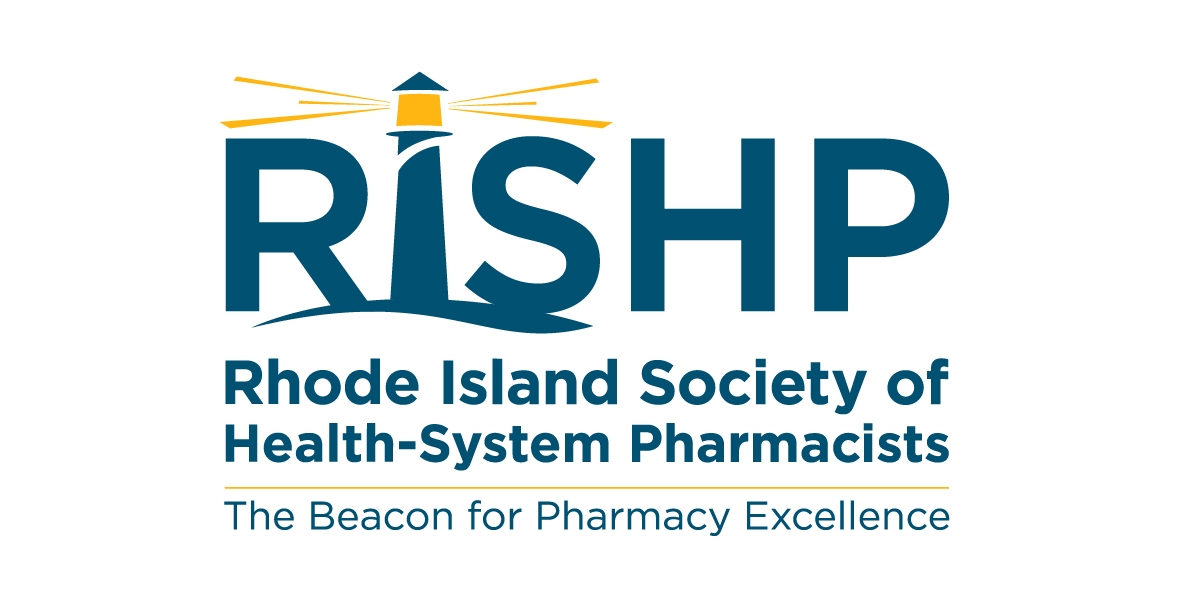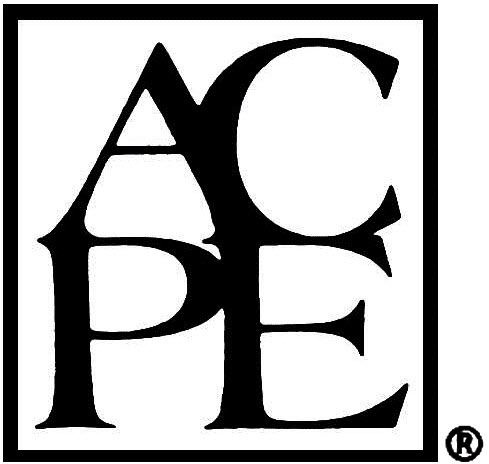
Rhode Island Society of Health-System Pharmacists Future of Pharmacy Showcase
Pharmacists and Pharmacy Technicians
November 07, 2020 8am to 1pm
Online Webinar - Registration Details in Confirmation Email
Members: $10
Non-Members: $25
Program Schedule
8:00 am: “Use of the Vizient Clinical Database to Identify Opportunities for Medication Use Improvements”
Jim Beaulieu, PharmD, Senior Clinical Pharmacist Specialist, Rhode Island Hospital,
8:20 am: “Extended Stabilities of extemporaneously prepared oral liquid formulations of venetoclax, midostaurin, sorafenib, and ibrutinib”
Ryan Ivone, M.S, Pharmaceutical Science Ph. D Candidate, University of Rhode Island, & Britny Rogala, PharmD, BCOP, Preceptor, University of Rhode Island
8:40 am: “HIV - PrEP, PEP, Treatment and Adherence”
Kristina Esposito, PharmD, Clinical Pharmacist & Mark Lorson, PharmD, BCACP, BCGP, Manager of Pharmacy Clinical, Neighborhood Health Plan of Rhode Island
9:00 am: “Safe Handling of Hazardous Drugs: A Closer Look at USP <800> for Pharmacy Technicians”
Caralyn Granato, PharmD Candidate 2021, University of Rhode Island, Kyra O’Connell, PharmD Candidate 2021, University of Rhode Island, & Ray Iannuccillo, PharmD, MBA, BCPS, BCOP, Preceptor, Rhode Island Hospital
9:20 am: “Staying Ahead of the Curve: AUC Monitoring of Vancomycin”
Shiler Mohammed, PharmD, PGY1 Pharmacy Practice Resident, South County Hospital, Demetria Malone, PharmD, PGY1 Pharmacy Practice Resident, South County Hospital, & Marissa Palm, PharmD, CDOE, Residency Director, South County Hospital
9:40 am: “2020 ASHP House of Delegates and the Policy Development Process”
Shannon Levesque, PharmD, Clinical Pharmacy Specialist, Kent Hospital, & Mark Rogers, PharmD, MBA, CDOE, CVDOE, Director of Pharmacy, Lawrence & Memorial Hospital & Westerly Hospital
10:00 am: RISHP Business Meeting followed by a break and separate Exhibitor Zoom Breakout Session
11:00 am: “Treatment Approaches for Chemotherapy-Induced Neuropathy”
Rishi Kachrani, PharmD Candidate 2021, University of Rhode Island, & Jayne Pawasauskas, PharmD, BCPS, Preceptor, University of Rhode Island
11:20 am: “Transitions of Care: Meds to Beds”
Michelle Dodd, PharmD, Clinical Pharmacist, Landmark Medical Center, & Brian Leung, PharmD, Outpatient Pharmacy Supervisor, Landmark Medical Center
11:40 am: “American Society of Health-System Pharmacists Practice Advancement Initiative 2030”
Leigh Briscoe-Dwyer, PharmD, BCPS, FASHP, ASHP Board of Directors
12:30 pm: Closing Remarks
Learning Objectives
Upon completion of this educational activity, pharmacists should be able to:
Use of the Vizient Clinical Database to Identify Opportunities for Medication Use Improvements
1. Describe the value of the Vizient Clinical Database.
2. Summarize the opportunities for improvement identified by the Vizient Clinical Database
Extended Stabilities of extemporaneously prepared oral liquid formulations of venetoclax, midostaurin, sorafenib, and ibrutinib
1. Describe the methods used to compound venetoclax, midostaurin, sorafenib, and ibrutinib.
2. Define the stabilities of venetoclax, midostaurin, sorafenib, and ibrutinib.
HIV - PrEP, PEP, Treatment and Adherence
1. Summarize the prophylactic agents used in Pre-Exposure Prophylaxis (PrEP), Post Exposure Prophylaxis (PEP), and once daily Human Immunodeficiency Virus (HIV) treatment regimens.
2. Describe the strategies local health plans are utilizing to positively affect adherence rates.
Safe Handling of Hazardous Drugs: A Closer Look at USP <800> for Pharmacy Technicians
1. Identify the responsibility of personnel handling hazardous drugs.
2. Summarize the application of the United States Pharmacopeia Chapter 800 in pharmacy compounding.
Staying Ahead of the Curve: AUC Monitoring of Vancomycin
1. Summarize the pharmacology of vancomycin and the difference between utilizing vancomycin trough vs area under the curve (AUC) monitoring.
2. Describe a monitoring program that can be utilized in an institutional setting.
2020 ASHP House of Delegates and the Policy Development Process
1. Describe various stages of the American Society of Health System Pharmacists (ASHP) policy making process.
2. Explain what happens at the Regional Delegate Conferences (RDC).
3. Summarize the results of the two policies that were voted on at the 2020 American Society of Health-System Pharmacists (ASHP) Summer Meeting.
Treatment Approaches for Chemotherapy-Induced Neuropathy
1. Define the presentation of chemotherapy induced peripheral neuropathy.
2. Summarize the current guidelines and treatment options for chemotherapy induced peripheral neuropathy.
Transitions of Care: Meds to Beds
1. Define transitions of care
2. Explain the strategies used in transitions of care
3. Describe Landmark Medical Center’s Meds to Beds program
American Society of Health-System Pharmacists Practice Advancement Initiative 2030
1. Describe the history of the Practice Advancement Initiative (PAI) and its future direction.
2. Summarize the process of engaging leaders, key constituents, and broader public comment to inform the revision of the Practice Advancement Initiative (PAI) recommendations.
3. Discuss major themes associated with the Practice Advancement Initiative (PAI) 2030 recommendations.
4. Describe how the use of the revised recommendations can be applied to your practice setting to assist with advancing pharmacy practice.
Upon completion of this educational activity, pharmacy technicians should be able to:
Use of the Vizient Clinical Database to Identify Opportunities for Medication Use Improvements
1. Describe the value of the Vizient Clinical Database.
2. Summarize the opportunities for improvement identified by the Vizient Clinical Database
Extended Stabilities of extemporaneously prepared oral liquid formulations of venetoclax, midostaurin, sorafenib, and ibrutinib
1. Describe the methods used to compound venetoclax, midostaurin, sorafenib, and ibrutinib.
2. Define the stabilities of venetoclax, midostaurin, sorafenib, and ibrutinib.
HIV - PrEP, PEP, Treatment and Adherence
1. Summarize the prophylactic agents used in Pre-Exposure Prophylaxis (PrEP), Post Exposure Prophylaxis (PEP), and once daily Human Immunodeficiency Virus (HIV) treatment regimens.
2. Describe the strategies local health plans are utilizing to positively affect adherence rates.
Safe Handling of Hazardous Drugs: A Closer Look at USP <800> for Pharmacy Technicians
1. Identify the responsibility of personnel handling hazardous drugs.
2. Explain the types of exposures to hazardous drugs encountered by pharmacy technicians.
Staying Ahead of the Curve: AUC Monitoring of Vancomycin
1. List the different ways that vancomycin can be monitored
2020 ASHP House of Delegates and the Policy Development Process
1. Describe various stages of the American Society of Health System Pharmacists (ASHP) policy making process
2. Explain what happens at the Regional Delegate Conferences (RDC)
3. Summarize the results of the two policies that were voted on at the 2020 American Society of Health-System Pharmacists (ASHP) Summer Meeting.
Treatment Approaches for Chemotherapy-Induced Neuropathy
1. Define the presentation of chemotherapy induced peripheral neuropathy.
2. Summarize the current guidelines and treatment options for chemotherapy induced peripheral neuropathy
Transitions of Care: Meds to Beds
1. Define transitions of care
2. Explain the strategies used in transitions of care
3. Describe Landmark Medical Center’s Meds to Beds program
American Society of Health-System Pharmacists Practice Advancement Initiative 2030
1. Describe the history of the Practice Advancement Initiative (PAI) and its future direction.
2. Summarize the process of engaging leaders, key constituents, and broader public comment to inform the revision of the Practice Advancement Initiative (PAI) recommendations.
3. Discuss major themes associated with the Practice Advancement Initiative (PAI) 2030 recommendations.
4. Describe how the use of the revised recommendations can be applied to your practice setting to assist with advancing pharmacy practice.

The University of Rhode Island College of Pharmacy is accredited by the Accreditation Council for Pharmacy Education as a provider of continuing pharmacy education. Attendance and completion of online program evaluations and self-assessment tools at the conclusion of the program are required in order to earn credit.
"The University of Rhode Island College of Pharmacy is accredited by the Accreditation Council for Pharmacy Education (ACPE) as a provider of continuing pharmacy education. This is a knowledge-based educational activity. Pharmacists and pharmacy technicians will receive 3.5 contact hours (0.35 ceus) for the educational activity. No partial credit is available. ACPE Universal Activity Number (UAN): 0060-9999-20-050-L04-P" (UAN): 0060-9999-20-050-L04-T"
REQUIREMENTS FOR CE CREDIT
A program evaluation must be completed at www.uripharmacycpd.org within 60 days of the live program date in order to receive CE credit. CE credit will be transferred to the CPE Monitor upon successful completion of the program evaluation. Transfer of CE credit should be verified at mycpemonitor.net where CE statements are available to print. Please refer to the evaluation instructions that follow for completing program evaluations and reporting CE credit.
Financial support provided by the Rhode Island Society of Health-System Pharmacists
Pharmacy technician objectives developed in consultation with Ann Marie Broccolo, CPhT, Technician Board Member, Rhode Island Society of Health-System Pharmacists
